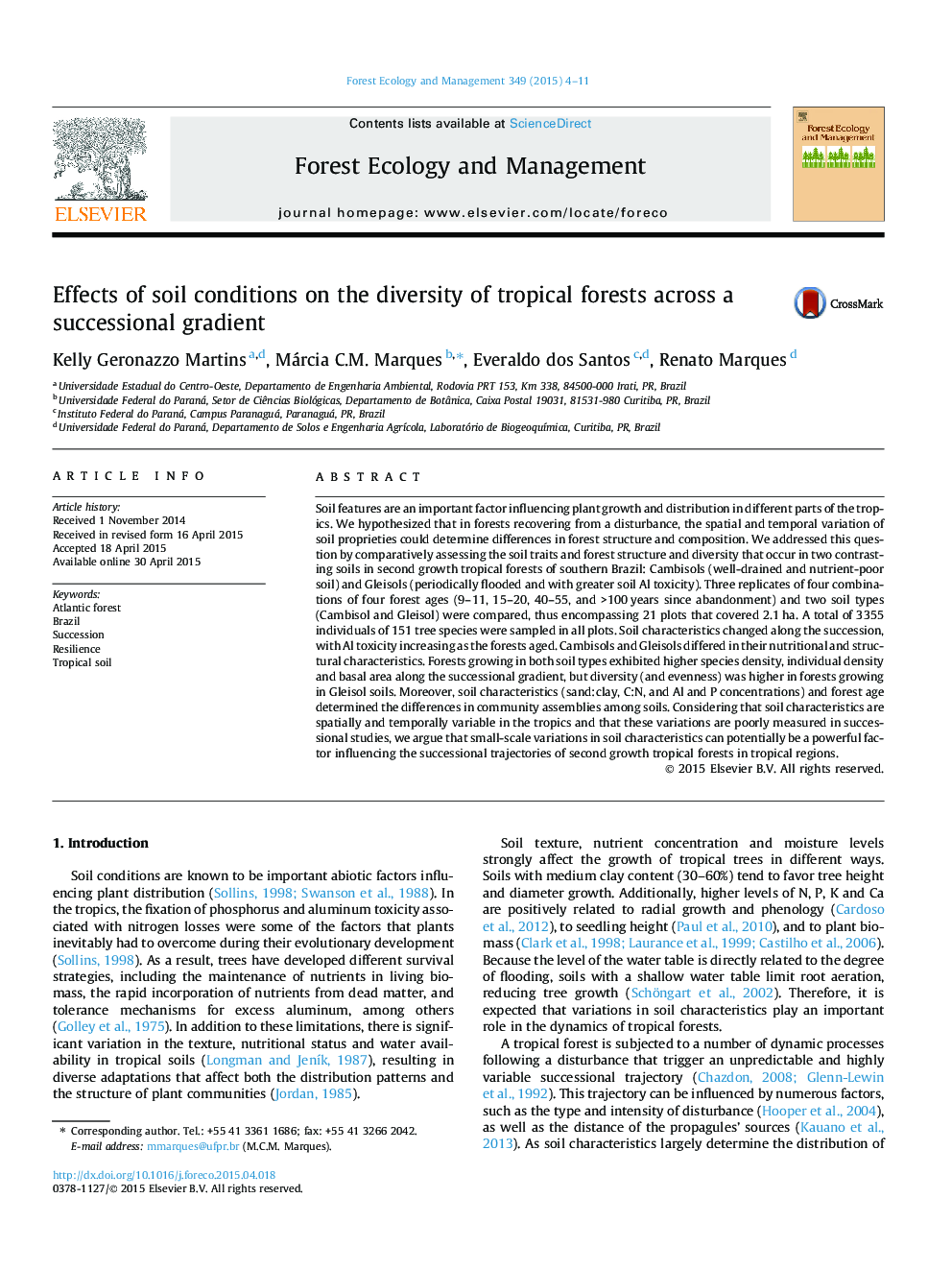| Article ID | Journal | Published Year | Pages | File Type |
|---|---|---|---|---|
| 86265 | Forest Ecology and Management | 2015 | 8 Pages |
•We compared changes in forest structure along succession in two soil types.•Soil characteristics changed along succession and between soil types.•Forests growing in two soil types differed in diversity and structure.•Soil can be considered an important factor affecting successional trajectories.
Soil features are an important factor influencing plant growth and distribution in different parts of the tropics. We hypothesized that in forests recovering from a disturbance, the spatial and temporal variation of soil proprieties could determine differences in forest structure and composition. We addressed this question by comparatively assessing the soil traits and forest structure and diversity that occur in two contrasting soils in second growth tropical forests of southern Brazil: Cambisols (well-drained and nutrient-poor soil) and Gleisols (periodically flooded and with greater soil Al toxicity). Three replicates of four combinations of four forest ages (9–11, 15–20, 40–55, and >100 years since abandonment) and two soil types (Cambisol and Gleisol) were compared, thus encompassing 21 plots that covered 2.1 ha. A total of 3355 individuals of 151 tree species were sampled in all plots. Soil characteristics changed along the succession, with Al toxicity increasing as the forests aged. Cambisols and Gleisols differed in their nutritional and structural characteristics. Forests growing in both soil types exhibited higher species density, individual density and basal area along the successional gradient, but diversity (and evenness) was higher in forests growing in Gleisol soils. Moreover, soil characteristics (sand:clay, C:N, and Al and P concentrations) and forest age determined the differences in community assemblies among soils. Considering that soil characteristics are spatially and temporally variable in the tropics and that these variations are poorly measured in successional studies, we argue that small-scale variations in soil characteristics can potentially be a powerful factor influencing the successional trajectories of second growth tropical forests in tropical regions.
